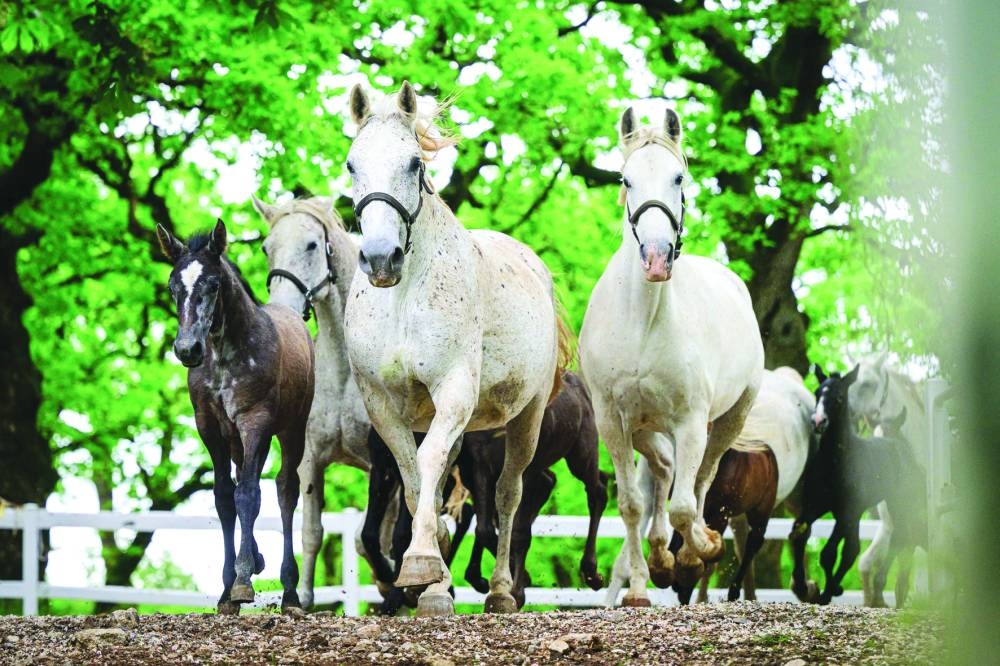People watched in awe as the world-renowned Lipizzan horses put on a dazzling show this month in the village of Lipica in the small Alpine state of Slovenia. The home of one of the world’s most distinguished horse breeds — and seven countries in the region that once were part of the Habsburg Empire — have reason to celebrate. Their shared tradition of Lipizzan breeding recently made Unesco’s Intangible Cultural Heritage list. The noble Lipizzans, also known as Lipizzaners, are descendants of long stallion lines crossing Spanish, Arabic and Berber horses and were first bred by the Habsburg court in the 16th century. They are famous for their “airs above the ground” classical dressage jumps — a series of difficult movements requiring strength and precision, in which the horse’s feet leave the ground.
This rare breed — featuring white hair but grey skin — is also famed as a carriage horse. The name derives from tiny Lipica, nestled among Slovenia’s verdant hills and lush forests. The picturesque village is home to one of the world’s oldest stud farms, which dates back to 1580 and currently stables more than 400 blue-blooded horses. “This is the Lipizzan’s home,” said Slovenian culture minister Asta Vrecko, ahead of the Unesco ceremony last weekend. The event was attended by the eight countries that jointly applied for recognition of their shared breeding heritage — Austria, Bosnia, Croatia, Hungary, Italy, Romania, Slovakia and Slovenia. For a moment, time stood still as horses and riders from the eight nations performed their dressage and driving exhibition. “They are phenomenal animals. The way that they’ve been trained and the level of skill of the riders is incredible,” said 42-year-old horse farm owner Laura Highlander, who travelled all the way from the United States to see the horses.
“I was super excited to be able to come... and see them in their training,” she added after visiting the Lipica stud farm.

Lipizzan horses run as they are put out to meadows for pasture in Lipica, Slovenia. (AFP)
